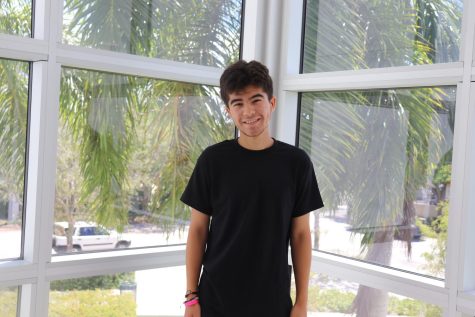Fashion’s Invisible Man: Martin Margiela (Pop at Palmetto)
May 1, 2022
One of the most influential designers of all time in the high fashion and streetwear world, Martin Margiela, is an enigma.
“Everything he does is one big, dynamic contradiction,” Sarah Mower said in her 2009 Vogue article, ‘Margiela Be Mine.’
While writing this article, I faced a dilemma. Does an effort to explain the mystery surrounding Margiela take away from the fascination that many have with the work of the enigmatic designer? I came to the conclusion that the best I, someone who simply has a fascination with Margiela and fashion in general, can do, is provide context for this fascination.
Remaining an enigma in the world of fashion, Martin Margiela is known for his intentional disappearance from the public eye. “The Invisible Man,” as he is sometimes called, has founded a brand on his mysterious and unconventional approach to the industry.

Pioneering the start of the anti-fashion movement, Martin Margiela remains one of the most important figures in fashion to date. Streetwear and high fashion would not be what it is today without this legendary designer.
Margiela graduated from the Royal Academy of Antwerp in 1979 and founded Maison Martin Margiela; he remained the founder until 1988. The fashion house was influenced by many traits of deconstructed fashion including that of Rei Kawakubo, the creator of Comme des Garçons.
In the creation of his fashion house, one of Margiela’s main focuses and specialties became the locations and atmospheres of his runway shows. The shows remained important to the ethos of the brand, as they have taken place in playgrounds, cafes, warehouses and many other unconventional spots. The use of these locations was in an effort to counter the established fashion brands at the time of his emergence. By going against the grain, Margiela became one of the most important names associated with fashion and the allure of his brand grew with him — a mystery man — at the helm.
Margiela’s collections span far and wide with their unique silhouettes, materials and deconstructed feeling. Deconstructed fashion is essentially fashion that looks unfinished on purpose; characteristics include jagged edges, exposed stitching, loose threads and distressed textiles.
This aesthetic pioneered by companies such as Maison Martin Magiela redefined and broadened clothing. Much like Marcel Duchamp and other modern and conceptual artists, Margiela created products (or art) that are up to the interpretation of the consumer.
Margiela’s influence seeping into that of high fashion and streetwear incidentally fell into the interest of hip-hop culture. Artists such as Westside Gunn and Kanye West have an adoration for the brand which continues to leave an everlasting mark on the art and music they create.
During West’s 2014 tour for his album ‘Yeezus,’ the rapper wore masks made specifically by Martin Margiela as one of the characteristics of many of the designer’s lines had the models cover their faces in black silk gauze in order to put emphasis on the clothes. The main difference between West’s Margiela mask and the others? West’s masks were encrusted with astonishing designs covered in anything from sequences in many different colors to glistening jewels. West’s approach, similar to that of Margiela, was to focus solely on the product rather than the person attached to it. Although glamorous, the rapper wanted audiences to focus on the music as Margiela seeks audiences to focus on the clothes and their qualities rather than the model attached to the pieces.
Margiela’s prime philosophy revolving around presentation and product has greatly affected modern day designers. His work at Maison Martin Margiela as well as his work as the creative director of the Hermes fashion house served as cornerstones of modern fashion.
The book showcasing Margiela’s works as well as campaigns, articles and artwork done by the designer simply named “Maison Martin Margiela,” has a representation of one of the brand’s noteworthy qualities of near animality, the cover has the numbers 1 through 23 across the front in three columns. This design is a nod to the tags used in Margiela’s clothing. The pieces have 1 through 23 on the white tags but have a different number circled depending on the type of piece that is produced. White is the color that Margiela utilizes to its fullest throughout his career. White is a space to be filled and that meaning is related to the original labels of the pieces which were fully white with four stitches – virtually nothing to express who made them.
This mysterious and anonymous, preferably out of the spotlight attitude is ironic at its core. The brand built its name based on Margiela’s absence in his shows and absence from the public. It is almost as if the fact that he is unreachable makes him one of the most sought out designers and creatives of our time.
Many of his revolutionary ideas, from the unconventional locations to the asymmetrical silhouettes to the idea that the creator does not need to be present to show that his fingerprints remain on the creation, Margiela is an enigma that captures the minds of anyone who crosses the path of his influence which seems to be everywhere yet nowhere all at once.








